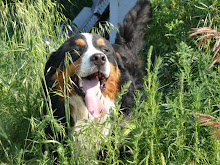Boss hogs cleaning up country hazards
Ridding woodland of brambles is a pig of a job but it's one these animals love, says Vicky Liddell
In a peaceful patch of Cambridgeshire woodland, a group of pigs is dozing contentedly in the spring sunshine. It's a lazy scene, but these Oxford Sandy & Black pigs are far from indolent.
They have just finished clearing a block of woodland of weeds and brambles and, in a few weeks' time, they will be moved on to start work on another overgrown area. The pigs are part of a woodland management scheme that is attracting increasing interest from farmers and gamekeepers.
On the Dunlossit Estate on the Isle of Islay, a gang of Tamworth pigs has made short work of an extensive area of bracken. In other parts of Britain, pigs have been successfully tackling ivy and rhododendrons.
Dan Bull is farm manager of the 700-acre Croxton Park estate near Cambridge and one of the pioneers of using pigs in woodland. "We started using them 15 years ago as a way of regenerating the woodland for shooting," he explains. "The woods had become neglected and the beaters were finding it difficult to battle through."
After trying out several different native breeds, they settled on the Oxford Sandy & Black, and the animals' impact on the estate was instant. Not only were the woods opened up, the rewards in conservation terms were amazing: new species of wild flowers and a marked increase in bluebells and breeding birds.
"It's a good balance now between the species," says Bull. "The woods are full of song. The pigs make tunnels in the earth that the birds can use and the half-digested wheat attracts a wide variety of wildlife."
Another unexpected advantage of keeping pigs in the woods is the decreasing numbers of muntjac deer.
The pigs are kept in family groups and moved around the estate on an eight-year rotation. The enclosures range from two acres to 11 and the areas are marked with an electric fence. Stocking rates vary according to the state of the woodland.
On an eight-acre block, there might be six sows plus their offspring; on a two-acre site, just 10 sows. In a few months, they can clear all the invasive ground cover and scrub while leaving the trees unharmed. According to Bull, it's all a question of timing.
"As long as the pigs are managed, they will do a wonderful job." It is only when they are allowed to get bored that they can become over-enthusiastic. One of the Croxton farm pigs once picked up a piece of wood with its teeth and hurled it at the electric fence. But they have never escaped.
Driving on the estate with Bull, I am surprised by how self-sufficient the pigs are. Apart from a basic shelter, a trough of water and a daily helping of home-grown organic wheat, they pretty much look after themselves.
The sows build their own nests out of sticks and straw in favourite spots that they return to again and again. They farrow once a year, producing up to 10 piglets each - which are not interfered with at all. "We only bring them into the shed for winter because of the heavy clay soil in the woods."
Dan Bull clearly loves his pigs and the feelings are mutual. The pigs follow him as though he is the Pied Piper, although this may have something to do with the large sack of wheat over his shoulder.
They also have more than a passing interest in the buckles of my boots. Clearly sociable and extremely friendly, Oxford Sandy & Black pigs are ideally suited to their woodland tasks.
Also known as the "Plum pudding" or "Oxford Forest" pig on account of its black blotches, the breed is one of Britain's oldest. Prolific, hardy and yet very docile, it is also usefully resistant to sunburn because of its rust-coloured coat. And despite reaching crisis point twice in the past 50 years, the breed is now finally gaining in popularity.
Managing woodlands with pigs is not new, as Bull is quick to point out. "It's what our ancestors were doing hundreds of years ago. We turned against it at the beginning of last century, and it's only now that we're going back to the future using the old traditional pig breeds."
It's a system that seems to serve everyone. The woods are manageable, the flora is regenerated and the pigs are in their element. And, at the end, there is delicious free-range organic pork that is sold direct from the farm to restaurants and butchers.
At Croxton Park, both pigs and farmer are lucky. This is the premium end of the trade - a world away from the unfortunate farmers who are losing £26 on every hog they sell as a result of rocketing feed prices.
The Waitrose "Save Our Bacon" campaign, launched in February, is collecting signatures to help raise awareness of the plight of the British pig farmer, who is now far more endangered than the breeds themselves.
"The Oxford Sandy & Black are great outdoor pigs," says Bull. "They have an easy temperament but they're also very clever. At the end of a stressful day, there's nothing better than coming down to the woods and spending time with them."
source: http://www.telegraph.co.uk/earth/main.jhtml?xml=/earth/2008/04/05/eapig105.xml
| |
| |



















